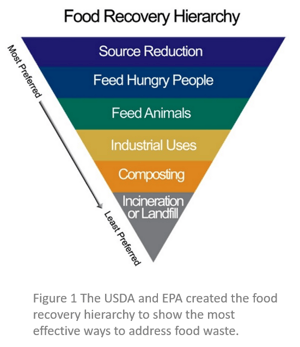How to Reduce Food Waste at Home
As we have continued to experience a worldwide pandemic, regional weather anomalies, and heightened food insecurity, consumers have grown more mindful of their grocery shopping habits and are looking to purchase products that add both convenience and extended shelf-life to their kitchens. An underlying challenge being to purposely use everything that is purchased for meal or snack consumption.
According to the USDA, 30 to 40 percent of our food supply results in food waste, 31 percent of loss resulting at the retails and consumer levels.1

 How is food waste defined?1
How is food waste defined?1
Food waste, better communicated as food loss, is food that was appropriate for human consumption, yet was discarded either before or after its expiration date.
Reducing food waste serves many upsides including saving money on groceries, reducing methane emissions in landfills, reducing carbon footprint, conserving energy and resources, and supporting your community with a steady food supply.
Food waste facts:2
- The annual food waste in America has an approximate value of $161 billion USD
- The average American family of 4 throws out an estimated $1,500 worth of food per year
- 9% of our landfills is solid food waste
Here are some tips to avoid and reduce food waste:3
- Be mindful of your refrigerator space, the more organized your fridge, the more precise your grocery list will be.
- Do not solely rely on expiration dates as a key indicator of a food item's health. 'Sell by’ and ‘expires on’ and ‘use by’ are widely misunderstood terms that lead to good food being discarded. Use your judgment to determine whether food is safe to eat.
- Store food correctly, utilizing the proper at-home packaging solutions. For example, keep potatoes in a Fox Combo Ultra Shield bag in a dark, cool space to prevent greening and growth. You should also store your produce items that produce high levels of ethylene separately from those that do not. Ethylene promotes ripening and can lead to spoilage.
- Find foodie inspiration! Do you have perfectly good produce scraps? Before feeding to animals or composting, opt to make a veggie-rich meatloaf, a chunky stew, or a quick stir-fry to utilize your produce in a delicious way. Explore the art of pickling with vegetable items and making applesauce or jams with fruit.
- Preserve foods for longer in your freezer. That container of baby kale and arugula that's becoming limp? Freeze these greens to toss into your smoothie for jam-packed nutrients. You can even chop garlic and herbs and toss them into an ice tray with olive oil for a quick meal starter.
To make a difference, a multitude of sustainable decisions are required. With mindful buying behavior, proactive meal planning, and the right storage solutions, you can transform the lifespan of good food within your home.
Sources
1. https://www.usda.gov/foodwaste/faqs
2. https://www.rubicon.com/blog/food-waste-facts/
3. https://www.epa.gov/recycle/reducing-wasted-food-home



